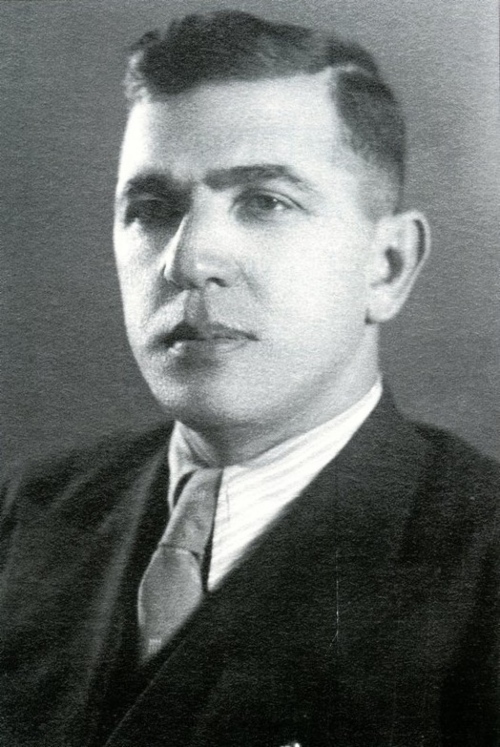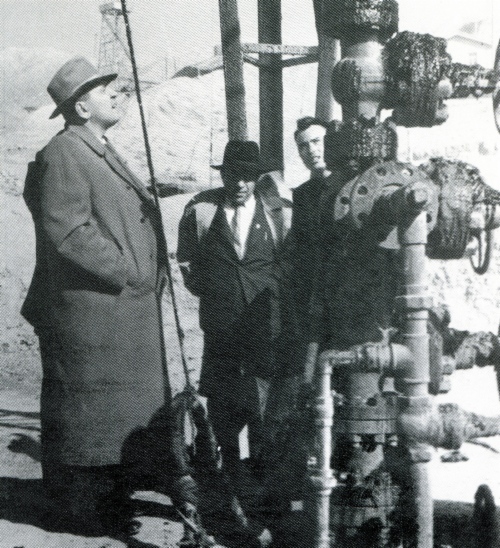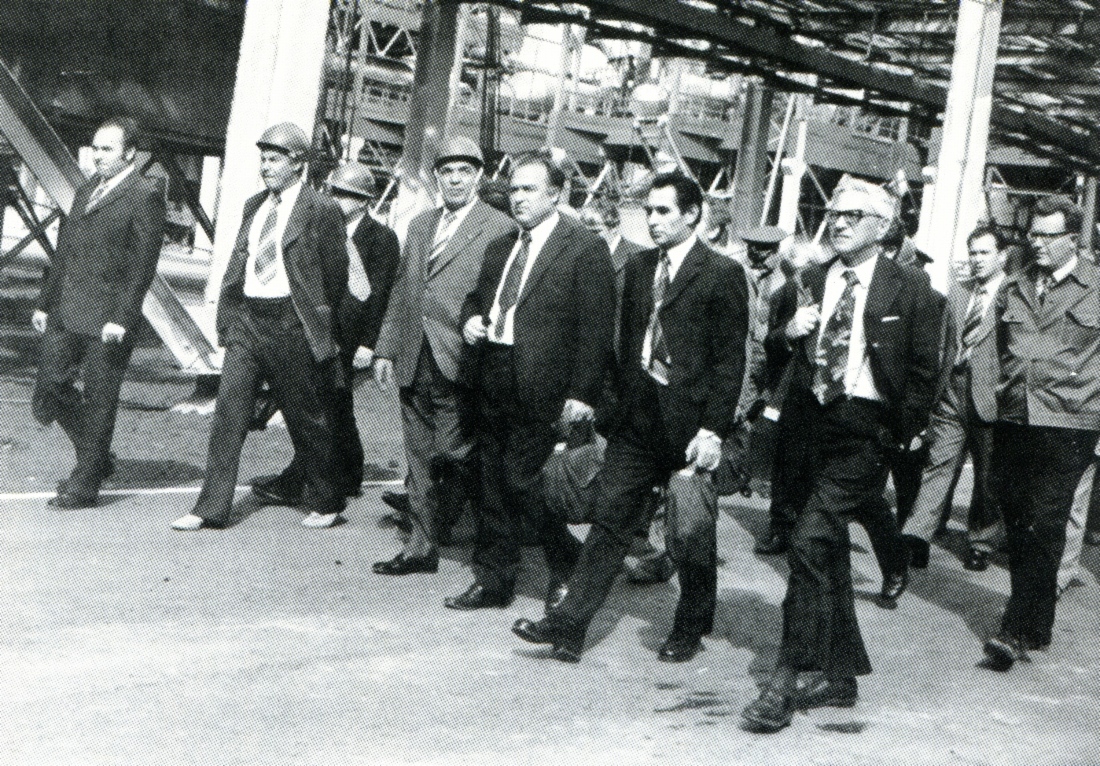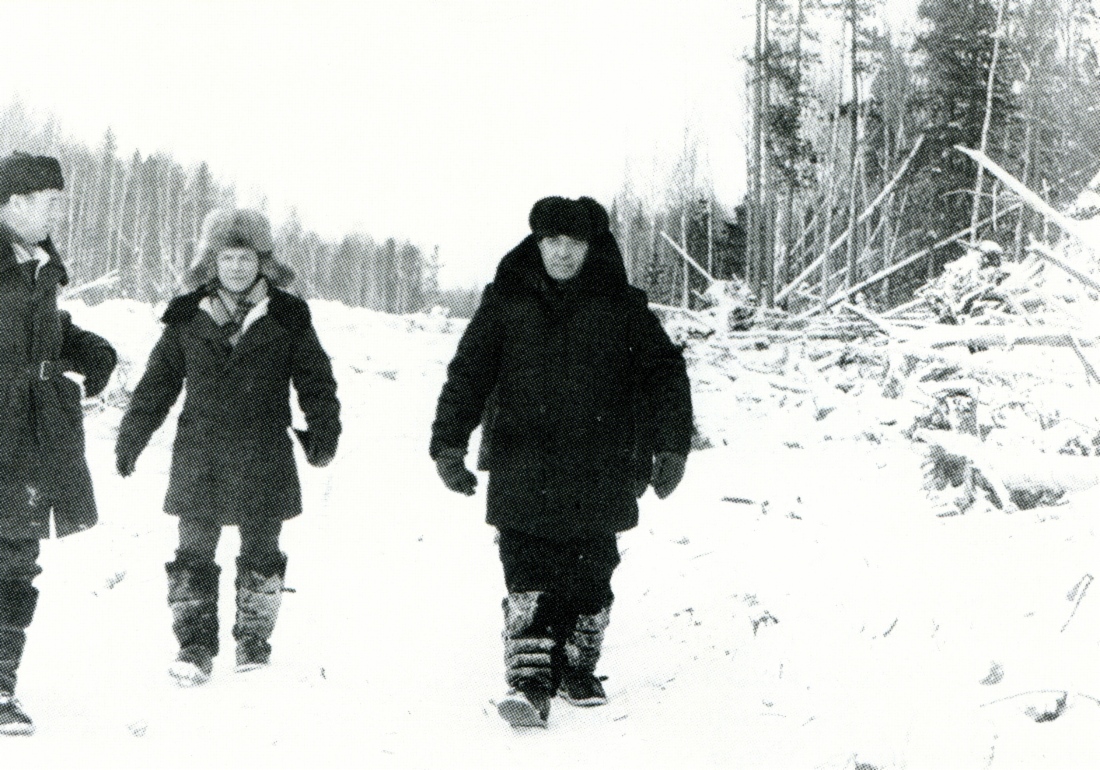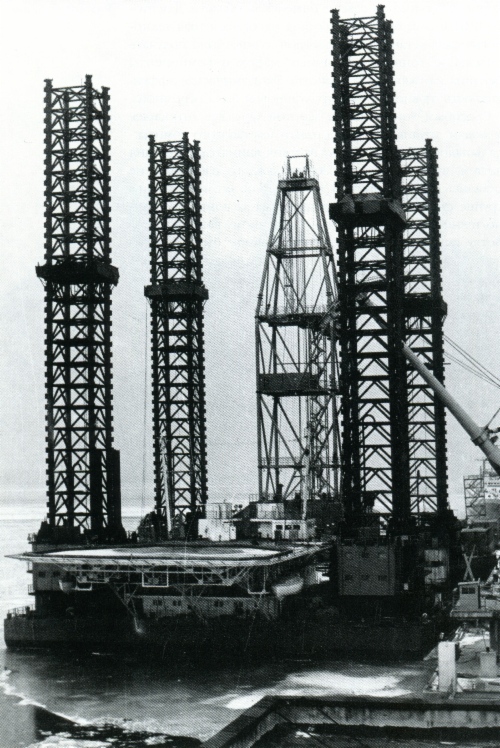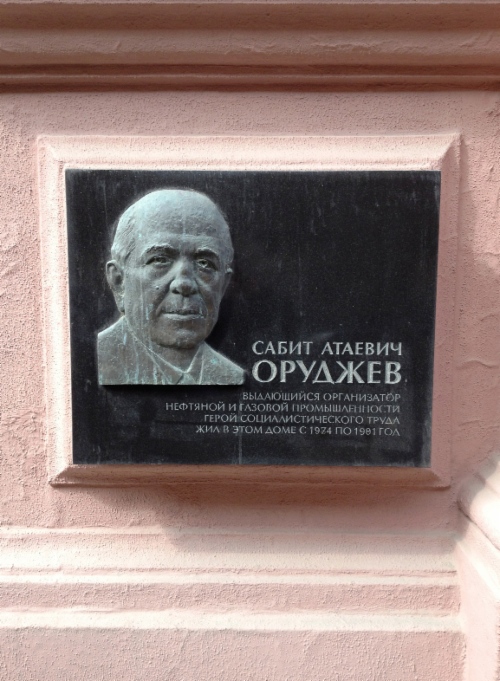Biography
This year marks the 100th anniversary of Sabit Orudzhev’s birth.
Sabit Orudzhev was born in Baku on May 31, 1912. At the age of 16 he started teaching at a village school for liquidation of illiteracy, where his pupils were sometimes older than he himself. However, teaching was not very attractive to the young man. He was more interested in the petroleum business that was rapidly evolving in those years. Therefore, he soon entered Azerbaijan Industrial University and graduated from it with honors in 1936. The young specialist was qualified as a mining and petroleum engineer.
Upon defending his thesis, Sabit Orudzhev was detached to the Ordzhonikidzeneft trust.
Way to top
Eventually, he became a foreman and, after a while, a manager at the new company. He later moved to other companies – Azneftekombinat, Azneft, Glavzapadneftedobycha, Krasnodarneft, etc.
In 1949 Sabit Orudzhev was put in charge of Glavmorneft to dedicate himself to offshore oil production. He received two highest awards, the Order of the Red Banner of Labor and the Order of Lenin, from the USSR Government for his work.
The innovative ideas and concepts of Sabit Orudzhev made it possible to achieve a real breakthrough in the offshore oil production. Cutting-edge equipment, novel techniques and approaches were applied in this sector. On the same year Orudzhev was entitled to the Stalin State Prize of the 3rd degree and two years later – of the 1st degree.
In 1955 Sabit Orudzhev became Deputy Minister of the Oil Industry of the USSR. However, two years later, the Ministry was disbanded and Sabit Orudzhev had to return to Baku. He started a new stage of his career path with the USSR Council of Ministers, where he took successive positions as the Deputy Chairman of the State Committee for Chemical and Oil Industry, Deputy Chairman of the State Committee for Oil Production Industry and in 1965 – First Deputy Minister of the Oil Production Industry of the USSR.
Scientific work
A talented man is talented in every thing he does or, at least, in many things.
Sabit Orudzhev’s scientific activity should be mentioned separately. He defended his PhD thesis in 1943 and at the same time his first book “Deep Oil Well Development Using Aerization Techniques” was published. In a little while, he issued “Pressure Maintenance Method (Applied on Krasnodarneft’s Shirokaya Balka Production Area)”.
Later on, Orudzhev developed and patented the design of deepwater modular platforms and supported it with a monograph detailing their operational principles. His doctorate thesis was entitled “Developing Caspian Sea’s Untapped Oil Fields from Deepwater Modular Platforms”.
In 1971 Sabit Orudzhev received USSR’s second-highest state award – the Order of the October Revolution – for the services in meeting the objectives of the five-year plans on the industry, construction, transportation and communications development.
Gas Industry Minister
Ministry reforming
Sabit Orudzhev joined the Gas Industry Ministry in 1972.
On the same year the Ministry was split up. Orudzhev was put in charge of the branch dealing with gas production, processing, transmission and storage.
The new Minister immediately set to upgrading his branch. A transition to two-dimension management structure started. All-Union Industrial Associations, All-Union Research and Production Associations and Production Associations came into existence. This helped establishing closer ties between the managerial and production spheres, increasing control flexibility and responsiveness as well as optimizing utilization of resources.
The management structure created by Sabit Orudzhev remained unchanged until 1989, when Gazprom State Gas Concern was established. It is noteworthy that the top management and associations’ heads kept their positions for a period of seventeen years that proved Sabit Orudzhev’s talent in recruitment.
Sci-tech development
The country was experiencing a growing “blue fuel” demand in the 1970s. However, Western Siberian fields were commissioned rather slowly. It meant that novel and advanced techniques and equipment needed to be used. Sabit Orudzhev was among those people who timely identified and found a viable solution to the problem.
VNIIgaz and VNIIEgazprom were defined as the main research institutes responsible for the development of Western Siberian gas fields, the All-Union Research and Design Institute for Gas Treatment, Transmission and Processing (VNIPIgaz) was set up on the basis of VNIIgaz branch in Azerbaijan.
Sabit Orudzhev supervised early development and adoption of new gas compressor units. He placed an emphasis on wide utilization of high-capacity units including those equipped with aircraft and marine turbines.
Sabit Orudzhev also initiated changes in approaches to drilling operations. In 1979 a gas well drilling association, Tyumenburgaz, was established. New types of drilling bits were widely adopted, a new cluster drilling technique was put into practice. All these novel solutions increased the scope of drilling operations more than ten times by 1980 as compared to 1972.
In parallel, automated control systems were booming in the country. The gas industry management system (GIMS) was established by 1980. It was comprised of the automated dispatch control sub-system (ADC of UGSS) and automated company management systems (ACMS).
Natural gas of Orenburg region
Formation of the Orenburg gas production and processing complex had started before Sabit Orudzhev’s appointment to the post of a Minister. Nevertheless, it was he who had to deal with numerous challenges of the complex construction.
Sabit Orudzhev shaped a new process control system. He exerted constant control over the construction site and hurried his team up to meet deadlines.
In 1974 Sabit Orudzhev personally investigated the incident that occurred at a gas production unit. He made everyone work hard to keep up with the facility commissioning deadlines.
June 21, 1974 was a milestone in the Orenburg gas region history – Bulgaria, Hungary, the German Democratic Republic, Poland, Romania, the USSR and Czechoslovakia signed the General Agreement on joint development of the Orenburg gas and condensate field and construction of a gas trunkline (Soyuz) between Orenburg and the western border of the USSR.
On July 9, 1974 the State Committee accepted the commissioning of the startup complex with the capacity of 15 billion cubic meters of gas within the Orenburg Gas Chemical Complex, Phase 1. In 1976 construction of the Orenburg Helium Plant began and its Phase 1 startup complex was put into operation in December 1977. By early 1978, the Orenburg field yielded 100 billion cubic meters of gas.
In late 1978 the Soyuz gas pipeline was ready and brought onstream on November 11, 1980. From this moment, the Orenburg field started exporting its gas.
The production growth was not the only thing Sabit Orudzhev cared about. He paid great attention to the wellbeing of his employees. More than one million square meters of living space was built for them; kindergartens, schools, medical facilities, pioneer camps were erected.
Sabit Orudzhev played a great role in formation of a country’s largest production complex in Orenburg.
Formidable gas of Western Siberia
Sabit Orudzhev embarked on a voyage of discovery Western Siberia while being employed as an oilman. He understood that despite harsh natural climatic conditions of the region, underground resources of Western Siberia are rich in immense gas reserves. Sabit Orudzhev anticipated that in the future no other region but Siberia would become the major production area of the “blue fuel”.
Features of the region demanded fundamentally new approaches to the fields’ pre-development, development methods, production technics and technologies. He engaged the scientists and experts from different ministries, administrations, research institutes to solve these tasks.
Just an ordinary equipment upgrade was not enough to achieve a real breakthrough – there was an urgent need for a brand new approach to the gas fields development. The existing gas production technologies applied at the gas fields of the Stavropol and Krasnodar Territories, Ukraine as well as methods of constructing a 1,020 millimeter diameter gas pipeline and compressor stations could not speed up development of the gas fields located in Western Siberia.
By then, the Urengoy gas filed was intended to be developed the same way the Medvezhye gas field was – by building a large number of the production facilities with the annual capacity reaching between 5 and 7 billion cubic meters of gas.
Au contraire, Sabit Orudzhev used scientific findings and offered a revolutionary new way to the gas fields development – by constructing the production facilities with annual capacity of 25 to 30 billion cubic meters. He also insisted on manufacturing the gas trunklines with 1,420 millimeters in diameter and designed for 75 Ata pressure – these specifications for the gas trunklines still exist.
By the beginning of 1975, the first 100 billion cubic meters of gas were produced from the gas fields located in the Tyumen Region. The remarkable fact was that the next 100 billion cubic meters were produced during two years, and the follow-up 100 billion cubic meters – just during a year.
By the time Sabit Orudzhev was appointed as Minister, Western Siberian gas was supplied to the Urals plants from the Punginskoye, Igrimskoye and Medvezhye fields. The Medvezhye – Nadym – Punga gas trunkline linked with the Igrim – Serov gas pipeline was a major feeder pipe.
In 1974 a new potent Northern Areas of the Tyumen Regions – Urals – Volga region – Center gas transmission system was commissioned. For the first time gas was conveyed from Western Siberia and supplied to the consumers living in the European part of the country including Moscow. The following year the Urengoy field was integrated into the gas transmission system.
Sabit Orudzhev made a personal and valuable contribution to creating the largest fields’ network in the history of the domestic gas industry as well as an extensive system of gas trunklines which delivered gas to almost every consuming region in the country and secured export supplies.
In 1972 natural gas production in the Tyumen Region increased in 1980 from 11.6 to 144 billion cubic meters.
Here we will build a town!
Development of the Urengoy field is one of the major achievements of Sabit Orudzhev. He believed that the field had a high potential for boosting the promising gas production in the North Tyumen region. In September 1973 he visited the field and personally decided the location where Novy Urengoy would be built.
On September 22, 1973 in the center of a trampled piece of tundra, next to an ordinary barrack, a first symbolic peg with a sign plate “Novy Urengoy” on it was battered down. In December the first convoy of gasmen arrived in the location of the future town. Pre-development of the field and the town began.
In June 1975 drilling of the first production well was completed at the field, in November – the first foundation stone of a 60 flat house was laid.
By May 30, 1978 the gas meters of the field recorded one billion cubic meters of gas produced since launching the commercial operation of the field. In 1981, 100 billion cubic meters of gas were produced from the field. On June 16, 1980 Novy Urengoy was officially recognized as a town, just a year before the death of Sabit Orudzhev who did his best to establish the town, develop the Urengoy and other gas-bearing fields of the North.
Senior person in charge of offshore operations
Another impressive achievement of Sabit Orudzhev as the Gas Industry Minister was creation of the Offshore Oil and Gas Fields Exploration and Development Head Office.
In 1978 it was Sabit Orudzhev’s idea to transfer oil production business from the Oil Ministry to the Gas Industry Ministry. Initially, it had been supposed to establish an independent Ministry responsible for offshore development operations. But in the end, the Offshore Oil and Gas Fields Exploration and Development Head Office was created under the Gas Industry Ministry.
The following associations were created: Kaspmorneftegazprom, Sakhalinmorneftegazprom, Kaliningradmorneftegazprom, Kubanmorneftegazprom, Chelekenmorneftegazprom and Soyuzmorgeo.
Sabit Orudzhev devoted many years of his life to offshore exploration and production and believed to be the most trusted expert in the offshore development management.
Following creation of the Offshore Oil and Gas Fields Exploration and Development Head Office, Sabit Orudzhev promptly succeeded to obtain the relevant decisions in solving managerial and staff-related issues, he was personally involved in staff employment and selection.
Man of action
During his employment as the Gas Industry Minister, Sabit Orudzhev proved himself as a talented manager. He had the rare gift of foresight.
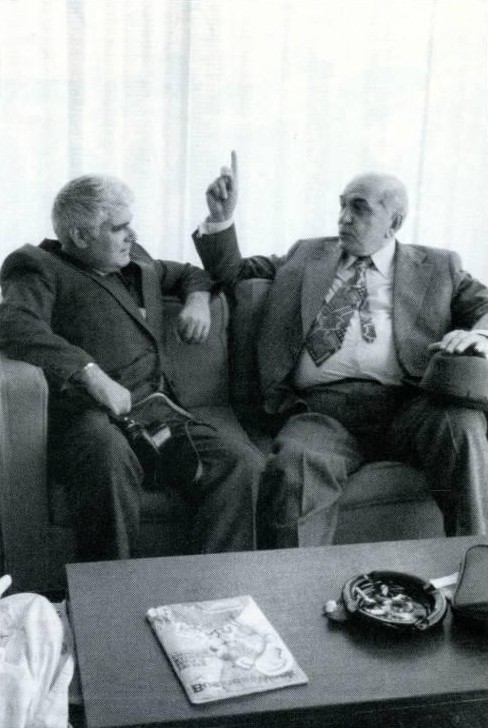
He was not afraid of being responsible for taking non-trivial decisions which afterwards played a crucial role in the gas industry progress.
His colleagues recalled that Sabit Orudzhev was a taught manager. Many people believed he was a controversial figure. But remarkably, his demand for discipline and sometimes even mercilessness lived in harmony with wonderful heartfelt lavishness. He always supported ordinary workers and took great care of creating the comfortable working environment for the employees.
Sabit Orudzhev always got to the heart of production-related issues, made on-site trips and took prompt decisions. He was highly professional, brave but careful and wise in decision-making, showed intense devotion to his duties.
Epilogue
Sabit Orudzhev died on April 20, 1981. His death was a tragic loss for his friends, relatives and many people he used to live and work with. Sabit Orudzhev was buried in the Novo-Dyevitchiye cemetery.
The Urengoy Gas Production Association, a passenger vessel, a quay in Nadym and a street in Baku were named after Sabit Orudzhev. A memorial sign plate was placed on a wall of the building where he had lived and worked for the last years of this life.
The most important events of the gas industry are linked with the Sabit Orudzhev’s name. His contribution to shaping the gas industry cannot be undervalued.

